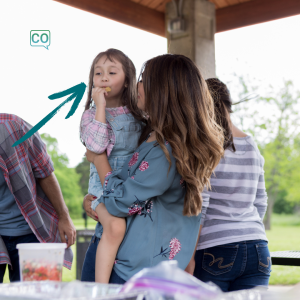This lesson introduces Dutch vocabulary about family, including direct family members like 'de vader' (the father) and 'de moeder' (the mother), plus possessive pronouns such as 'mijn' (my) and 'jouw' (your). You will practice everyday phrases to talk about your family and relationships.
Listening and reading
Start this class by listening to the audio and completing the corresponding exercises.
Vocabulary (24) Share Copied!
Exercises Share Copied!
These exercises can be done together during conversation lessons or as homework.
Exercise 1: Reorder sentences
Instruction: Make correct sentences and translate.
Exercise 2: Match a word
Instruction: Match the translations
Exercise 3: Cluster the words
Instruction: Divide the words into two groups: immediate family members and extended family members.
Directe familieleden
Uitgebreide familieleden
Exercise 4: Translate and use in a sentence
Instruction: Pick a word, translated and use the word in a sentence or dialogue.
1
De dochter
The daughter
2
Kletsen
To chat
3
De broer
The brother
4
Het gezin
The family
5
Praten
To talk
Oefening 5: Conversation exercise
Instructie:
- Beschrijf de aangegeven relaties tussen de gezinsleden. (Describe the indicated relationships between the family members.)
Teaching guidelines +/- 10 minutes
Example phrases:
|
Juliette is de vrouw van Mark. Juliette is the wife of Mark. |
|
Alexis en Louise zijn de grootouders van Anna. Alexis and Louise are the grandparents of Anna. |
|
Marco is de zoon van Birgit en Stephan. Marco is the son of Birgit and Stephan. |
|
De jongen en het meisje zijn broer en zus. The boy and the girl are siblings. |
|
Caitlin is de moeder van twee meisjes. Caitlin is the mother of two girls. |
|
Het meisje heeft twee broers. The girl has two brothers. |
| ... |
Exercise 6: Dialogue Cards
Instruction: Select a situation and practice the conversation with your teacher or fellow students.
Exercise 7: Multiple Choice
Instruction: Choose the correct solution
1. Ik ____ vaak met mijn familie over ons werk.
(I ____ often talk with my family about our work.)2. Jij ____ met je broer over zijn kinderen.
(You ____ talk with your brother about his children.)3. Hij ____ graag met zijn zus en haar gezin.
(He ____ likes to talk with his sister and her family.)4. Wij ____ vaak met onze ouders over onze familie.
(We ____ often talk with our parents about our family.)Exercise 8: My family
Instruction:
Verb Tables
Praten - To talk
Onvoltooid Tegenwoordige Tijd
- Ik praat
- Jij praat
- U praat
- Hij praat
- Zij praat
- Wij praten
- Jullie praten
- Zij praten
Spreken - To speak
Onvoltooid Tegenwoordige Tijd
- Ik spreek
- Jij spreekt
- U spreekt
- Hij spreekt
- Zij spreekt
- Wij spreken
- Jullie spreken
- Zij spreken
Exercise 9: De bezittelijke voornaamwoorden (mijn, jouw, zijn,...)
Instruction: Fill in the correct word.
Grammar: The possessive pronouns (mijn, jouw, zijn,...)
Show translation Show answerszijn, mijn, onze, Mijn, jouw, jullie, haar
Grammar Share Copied!
It's not the most exciting thing, we admit, but it’s absolutely essential (and we promise it'll pay off)!
A1.5.2 Grammatica
De bezittelijke voornaamwoorden (mijn, jouw, zijn,...)
The possessive pronouns (mijn, jouw, zijn,...)
Verb conjugation tables for this lesson Share Copied!
Praten to talk Share Copied!
Onvoltooid tegenwoordige tijd (OTT)
| Dutch | English |
|---|---|
| (ik) praat | I talk |
| (jij) praat | you talk |
| (hij/zij/het) praat | he/she/it talks |
| (wij) praten | we talk |
| (jullie) praten | you talk |
| (zij) praten | they talk |
Don't see progress when learning on your own? Study this material with a certified teacher!
Do you want to practice Dutch today? That is possible! Just contact one of our teachers today.
Lesson Overview: Family and Possessive Pronouns in Dutch
This lesson introduces basic vocabulary and expressions related to family members, focusing on both immediate and extended family. You'll also learn how to use possessive pronouns such as mijn (my), jouw (your), and zijn (his) correctly when talking about family relationships.
Key Vocabulary: Family Members
The vocabulary is divided into two groups:
- Immediate family: de vader (the father), de moeder (the mother), de broer (the brother), de zus (the sister), de zoon (the son), de dochter (the daughter)
- Extended family: de oom (the uncle), de tante (the aunt)
Possessive Pronouns
Possessive pronouns indicate ownership or relation and are essential to describe family connections. Examples include:
- Mijn moeder (My mother)
- Jouw tante (Your aunt)
- Zijn broer (His brother)
- Onze kinderen (Our children)
Practice Dialogues
The lesson includes practical dialogues to help you introduce your family, discuss family size and structure, and talk about family members in everyday conversations such as meeting neighbors or chatting in a café.
Verb Focus: Talking about Family
The verbs praten (to talk) and spreken (to speak) are presented in the present tense with multiple-choice exercises and a short story to strengthen your understanding and usage.
Usage Notes: Differences Between Dutch and English
In Dutch, possessive pronouns agree in number and sometimes gender with the noun they modify, but unlike English, Dutch does not use an apostrophe for possessives (e.g., mijn moeder not mijn's moeder). The definite article (de or het) is often omitted in possessive constructions. For example, Mijn moeder translates directly to "My mother" without needing "the."
Useful phrases include:
- Wie is jouw broer en hoe oud is hij? – Who is your brother and how old is he?
- Onze vader werkt veel. – Our father works a lot.
- Heb jij kinderen? – Do you have children?
By mastering these words and phrases, you'll be able to comfortably talk about family relationships in Dutch at an A1 level.



































